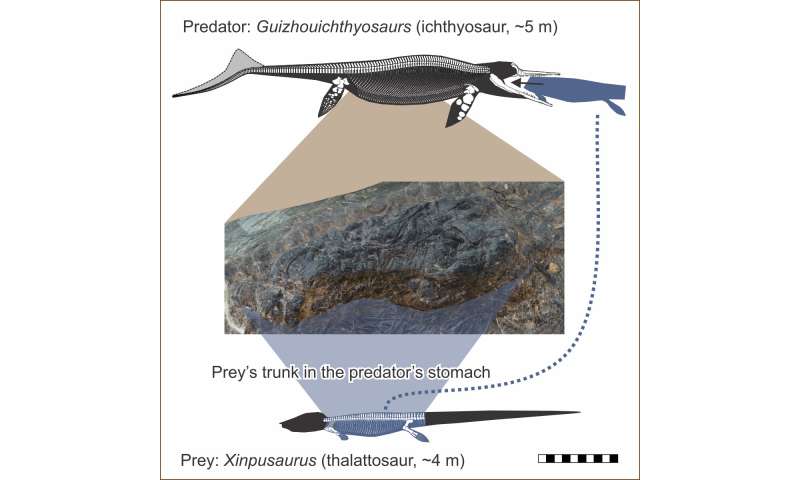
At 240 million years ago. Blunt teeth were no deterrent, as it turns out:
When paleontologists digging in a quarry in southwestern China uncovered the nearly complete skeleton of a giant, dolphin-like marine reptile known as an ichthyosaur, they didn’t expect to find another fossil in its stomach. This second skeleton belonged to a four-meter-long, lizard-like aquatic reptile known as a thalattosaur and is one of the longest fossils ever found in the stomach of a prehistoric marine reptile. While the researchers can’t say for sure whether the thalattosaur was scavenged or preyed upon, their work could be the oldest direct evidence that Triassic marine reptiles like ichthyosaurs—previously thought to be cephalopod feeders—were apex megapredators …
“If you look across all the similar marine reptiles that lived in the age of dinosaurs, we’ve actually never found something articulated like this in the stomach,” says co-author Ryosuke Motani, a professor of paleobiology at the University of California, Davis. “Our ichthyosaur’s stomach contents weren’t etched by stomach acid, so it must have died quite soon after ingesting this food item. At first, we just didn’t believe it, but after spending several years visiting the dig site and looking at the same specimens, we finally were able to swallow what we were seeing.”
Because stomach contents are rarely found in marine fossils, researchers rely on tooth and jaw shapes to learn what prehistoric species may have eaten. While prehistoric apex predators are typically thought to have large teeth with sharp cutting edges, some modern predatory species like crocodiles use blunt teeth to consume large prey items with grasping force instead of cutting. Ichthyosaurs share these blunter teeth, but with no direct evidence of large prey consumption in these prehistoric marine reptiles, scientists believed that they fed on small prey like cephalopods.
Cell Press, “Massive, well-preserved reptile found in the belly of a prehistoric marine carnivore” at Phys.org
Paper. (open access)
Of course, for the ichthyosaur, unlike the paleontologist, eating wasn’t a theory. The more we learn, the more many of our assumptions will be challenged.